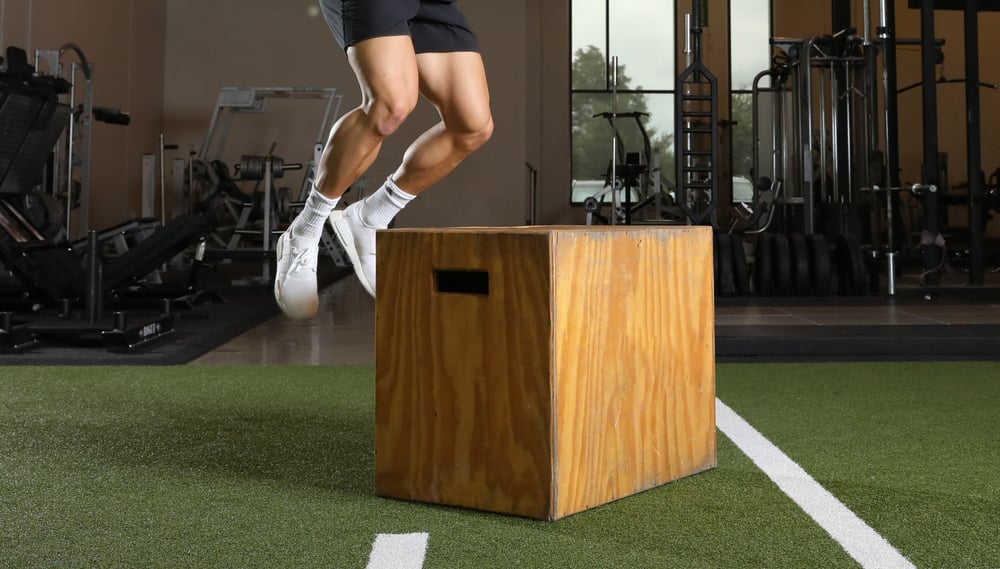
Issue 216
April 2025
New science doesn’t get fresher than this as Ray Klerck breaks down the latest research on how to warm up for instant, fight-ready power gains.
There’s a new gospel in the symphony of warm-up options. Stretching, skipping, and shaking your limbs like a malfunctioning inflatable tube man might get your sweat glands ticking, but it’s not doing much for your knockout potential. That era is dead according to the latest and most comprehensive meta-analysis of its kind. The real secret to switching on fight-night power isn’t in what you do after the warm-up. It’s in how you warm up in the first place. Freshly minted in the Journal of Functional Morphology and Kinesiology, researchers analyzed 866 combat athletes across 19 studies and confirmed that properly applied post-activation performance enhancement (PAPE) protocols can give you an immediate, measurable power spike. Okay, so the protocol’s acronym may read like something you’d catch from a dodgy pre-workout, but it is the sharpest tool in the pre-fight toolkit for anyone who wants to unlock the performance in their hidden power reserves.
WHY CARE ABOUT PAPE?
There are better acronyms than PAPE. While lacking in catchiness, it oozes in results. Post-Activation Performance Enhancement is a short-term power upgrade delivered to your body through specific, high-effort movements before your main performance effort. Think of it as strength-based sorcery. Put into practice it might involve a heavy set of squats followed by a burst of explosive jump squats or any kind of powerful movement that jolts your neuromuscular system into action. It creates increased muscle temperature, heightened motor unit recruitment, faster neural firing, and even changes in muscle water content that alter elasticity and stiffness. The take-home result? Your muscles contract faster and harder, and your nervous system gets laser-focused so you can hit, kick, lift, or sprint with more force than you could five minutes earlier. Too good to be true? Yes, because it doesn’t work for everyone, and it doesn’t work every time. You have to time it. Tailor it. Earn it. Or you might wind up primed for a nap instead of a knockout.

HOW PAPE MADE JUMPS HIGHER
The meta-analysis found the clearest benefit of this training tactic in taekwondo athletes, who saw massive boosts in explosive power, especially in their countermovement jump (CMJ) performance, after using well-structured PAPE protocols. One standout protocol, known as the bandal chagui, paired sets of a heavy-resistance training exercise like deadlifts of squats with dynamic sport-specific kicks. That delivered an effect size of 1.19, which in research terms is somewhere between ‘significant’ and your training partners asking you what you’ve been taking. Conversely, Muay Thai athletes who used roundhouse kicks as their warm-up saw their performance tank, registering a negative effect size of –1.36. Kicks may look specific, but when used as high-rep warm-up drills, they can gas an athlete’s energy system.
One of the key takeaways from the research is that not all bodies and fight styles respond in the same way. Amateur athletes saw better gains using plyometric protocols with short rest. Elite athletes needed heavier loads and more rest to get the same kick. That means if you’re a weekend warrior, you might be setting fire to your central nervous system when you should be lighting a candle. If you want to get the most out of PAPE, you need to personalize it to three factors: your competitive level, your training experience, and the energy system demands of your fight style. Boxers and wrestlers might respond better to different drills than a karateka or BJJ player. Think context, not copycat.

THE PAPE SWEET SPOT
When you perform a high-intensity movement, like a heavy squat, a depth jump, or an explosive throw, you’re asking your nervous system to go from standby to full send. But unlike your over-caffeinated mate who’s ready to throw hands after one vodka Red Bull, your body takes a little longer to settle into the performance pocket. The research found the optimal window to perform after a PAPE drill is 6–10 minutes. Go too early, and you’re still fatigued. Wait too long, and the effects fade like the last pump from an overused resistance band. In training, time it. Use a stopwatch and treat your rest period like it matters, because it does.
Let’s stop mucking around and give you some usable, fight-tested ways to activate your own PAPE protocol. If you’re an elite fighter or advanced trainee, try 2–3 sets of heavy squats or trap bar deadlifts at 85–90% of your one repetition maximum. Keep the big reps super low (1–3 per set), rest 2–3 minutes between sets, and then wait 6–10 minutes before your explosive drill or fight. Your muscles will be primed, and your nervous system will purr like a red Ford Mustang. If you’re newer to strength training or a lower-tier athlete, bodyweight plyometrics will do the trick. Use exercises like squat jumps, split jumps, or explosive push-ups. Aim for 2–3 sets of 5 reps, with short rest intervals (30–60 seconds), then wait 4–6 minutes before your performance test or sparring.
Your warm-up should follow this loose structure:
· General movement (skipping rope, shadowboxing, air squats)
· Specific activation (heavy lift or jump)
· Strategic rest (6–10 minutes of low-intensity movement)
· Performance task (pad work, live sparring, explosive drills)
And no, foam-rolling your IT band for 10 minutes while sipping on beetroot juice doesn’t count.

HOW TO USE PAPE IN YOUR TRAINING
Outside of a fight warm-up, PAPE can be baked into your weekly program using something called complex training. This is a well-known training protocol for gym rats looking to add power and muscle. To do it, you’ll pair a heavy resistance move with a biomechanically similar explosive movement. So, you might do 3 reps of heavy front squats, then do 3 to 4 jump squats. For chest, you’d bench press, then do clap push-ups. Pull-up, then slam a med ball overhead. This builds a long-term PAPE adaptation that makes your muscles and nervous system more efficient over time. It's not just for fighters, either. Any athlete who needs to lift fast or react quickly can benefit from this training style. PAPE doesn’t discriminate, but it does reward consistency. Be warned, there are several ways to botch this, so follow this guide on what not to do.
· Don’t warm up like it’s a CrossFit WOD. If you’re sweating like you’ve just finished the fight before the fight, you’ve gone too far. PAPE isn’t a pre-fatigue protocol.
· Don’t ignore the rest. That 6–10-minute window is essential. Rest means active recovery, not checking your socials, and having a sit.
· Don’t use overly sport-specific drills that leave you more drained than primed. Just because it looks like fighting doesn’t mean it acts like priming. Remember: Muay Thai roundhouses did more harm than good in the study.
And don’t copy other fighters without testing it yourself. What charges one fighter’s batteries might short-circuit yours.
WARM UP TO WIN, NOT JUST TO WIGGLE
A solid PAPE strategy can give you a genuine edge on fight night. It’s backed by peer-reviewed data, proven in combat sports, and simple enough to implement if you’re willing to test, measure, and adjust. Too many fighters treat warm-ups like something to do before the real work starts. But the warm-up is part of the work. It’s your first chance to separate yourself from your opponent. Get it right, and you begin the fight with momentum. Get it wrong, and you spend the first round trying to convince your limbs to listen to the person in charge. So, do yourself a favor. Prime with purpose. Lift with intent. Rest like a professional. And next time you step onto the mats or into the cage, make sure your body is fully tuned, not just ticking over like a cold diesel engine on a winter morning. Power’s not built on fight night. It’s activated in the precious minutes before, so we might start seeing big weights thrown around in backstage footage of pre-fight warm-ups.










